#Katharine Card
Photo
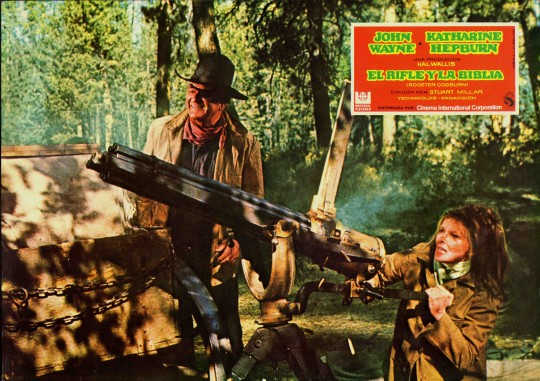
Rooster Cogburn, Spanish lobby card. 1975
5 notes
·
View notes
Photo

"The Graduate" (1967)
Directed by Mike Nichols
(Comedy/Drama/Romance)
#the graduate#mike nichols#dustin hoffman#anne bancroft#katharine ross#film#cinema#cinema title cards#1967
3 notes
·
View notes
Text
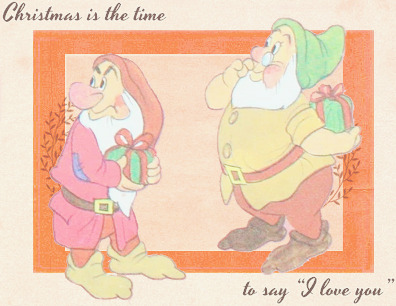
#the seven dwarfs#snow white and the seven dwarfs#snow white#christmas#fake vintage christmas cards#THEY'RE GAY YOUR HONOR#just doc things#doc energy#where a million queues shine#also i just really like that katharine mcphee song#we'd be a tough act to follow i know
3 notes
·
View notes
Text
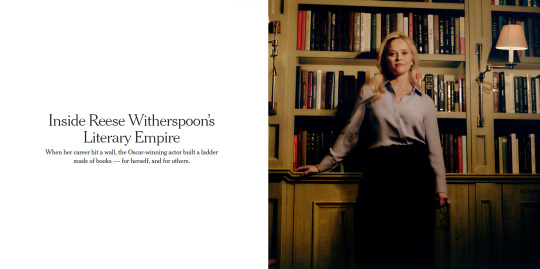
By Elisabeth Egan
May 18, 2024
“You’d be shocked by how many books have women chained in basements,” Reese Witherspoon said. “I know it happens in the world. I don’t want to read a book about it.”
Nor does she want to read an academic treatise, or a 700-page novel about a tree.
Sitting in her office in Nashville, occasionally dipping into a box of takeout nachos, Witherspoon talked about what she does like to read — and what she looks for in a selection for Reese’s Book Club, which she referred to in a crisp third person.
“It needs to be optimistic,” Witherspoon said. “It needs to be shareable. Do you close this book and say, ‘I know exactly who I want to give it to?’”
But, first and foremost, she wants books by women, with women at the center of the action who save themselves. “Because that’s what women do,” she said. “No one’s coming to save us.”
Witherspoon, 48, has now been a presence in the book world for a decade. Her productions of novels like “Big Little Lies,” “Little Fires Everywhere” and “The Last Thing He Told Me” are foundations of the binge-watching canon. Her book club picks reliably land on the best-seller list for weeks, months or, in the case of “Where the Crawdads Sing,” years. In 2023, print sales for the club’s selections outpaced those of Oprah’s Book Club and Read With Jenna, according to Circana Bookscan, adding up to 2.3 million copies sold.
So how did an actor who dropped out of college (fine, Stanford) become one of the most influential people in an industry known for being intractable and slightly tweedy?
It started with Witherspoon’s frustration over the film industry’s skimpy representation of women onscreen — especially seasoned, strong, smart, brave, mysterious, complicated and, yes, dangerous women.
“When I was about 34, I stopped reading interesting scripts,” she said.
Witherspoon had already made a name for herself with “Election,” “Legally Blonde” and “Walk the Line.” But, by 2010, Hollywood was in flux: Streaming services were gaining traction. DVDs were following VHS tapes to the land of forgotten technology.
“When there’s a big economic shift in the media business, it’s not the superhero movies or independent films we lose out on,” Witherspoon said. “It’s the middle, which is usually where women live. The family drama. The romantic comedy. So I decided to fund a company to make those kinds of movies.”
In 2012, she started the production company Pacific Standard with Bruna Papandrea. Its first projects were film adaptations of books: “Gone Girl” and “Wild,” which both opened in theaters in 2014.
Growing up in Nashville, Witherspoon knew the value of a library card. She caught the bug early, she said, from her grandmother, Dorothea Draper Witherspoon, who taught first grade and devoured Danielle Steel novels in a “big cozy lounger” while sipping iced tea from a glass “with a little paper towel wrapped around it.”
This attention to detail is a smoke signal of sorts: Witherspoon is a person of words.
When she was in high school, Witherspoon stayed after class to badger her English teacher — Margaret Renkl, now a contributing opinion writer for The New York Times — about books that weren’t part of the curriculum. When Witherspoon first moved to Los Angeles, books helped prepare her for the “chaos” of filmmaking; “The Making of the African Queen” by Katharine Hepburn was a particular favorite.
So it made sense that, as soon as Witherspoon joined Instagram, she started sharing book recommendations. Authors were tickled and readers shopped accordingly. In 2017, Witherspoon made it official: Reese’s Book Club became a part of her new company, Hello Sunshine.
The timing was fortuitous, according to Pamela Dorman, senior vice president and publisher of Pamela Dorman Books/Viking, who edited the club’s inaugural pick, “Eleanor Oliphant is Completely Fine.” “The book world needed something to help boost sales in a new way,” she said.
Reese’s Book Club was that something: “Eleanor Oliphant” spent 85 weeks on the paperback best-seller list. The club’s second pick, “The Alice Network,” spent nearly four months on the weekly best-seller lists and two months on the audio list. Its third, “The Lying Game,” spent 18 weeks on the weekly lists.
“There’s nothing better than getting that phone call,” added Dorman, who has now edited two more Reese’s Book Club selections.
Kiley Reid’s debut novel, “Such a Fun Age,” got the nod in January 2020. She said, “When I was on book tour, a lot of women would tell me, ‘I haven’t read a book in four years, but I trust Reese.’” Four years later, on tour for her second novel, “Come and Get It,” Reid met women who were reading 100 books a year.
Witherspoon tapped into a sweet spot between literary and commercial fiction, with a few essay collections and memoirs sprinkled in. She turned out to be the literary equivalent of a fit model — a reliable bellwether for readers in search of intelligent, discussion-worthy fare, hold the Proust. She wanted to help narrow down the choices for busy readers, she said, “to bring the book club out of your grandma’s living room and online.”
She added: “The unexpected piece of it all was the economic impact on these authors’ lives.”
One writer became the first person in her family to own a home. “She texted me a picture of the key,” Witherspoon said. “I burst into tears.”
Witherspoon considers a handful of books each month. Submissions from publishers are culled by a small group that includes Sarah Harden, chief executive of Hello Sunshine; Gretchen Schreiber, manager of books (her original title was “bookworm”); and Jon Baker, whose team at Baker Literary Scouting scours the market for promising manuscripts.
Not only is Witherspoon focused on stories by women — “the Bechdel test writ large,” Baker said — but also, “Nothing makes her happier than getting something out in the world that you might not see otherwise.”
When transgender rights were in the headlines in 2018, the club chose “This Is How It Always Is,” Laurie Frankel’s novel about a family grappling with related issues in the petri dish of their own home. “We track the long tail of our book club picks and this one, without fail, continues to sell,” Baker said.
Witherspoon’s early readers look for a balance of voices, backgrounds and experiences. They also pay attention to the calendar. “Everyone knows December and May are the busiest months for women,” Harden said, referring to the mad rush of the holidays and the end of the school year. “You don’t want to read a literary doorstop then. What do you want to read on summer break? What do you want to read in January?”
Occasionally the group chooses a book that isn’t brand-new, as with the club’s April pick, “The Most Fun We Ever Had,” from 2019. When Claire Lombardo learned that her almost-five-year-old novel had been anointed, she thought there had been a mistake; after all, her new book, “Same As it Ever Was,” is coming out next month. “It’s wild,” Lombardo said. “It’s not something that I was expecting.”
Sales of “The Most Fun We Ever Had” increased by 10,000 percent after the announcement, according to Doubleday. Within the first two weeks, 27,000 copies were sold. The book has been optioned by Hello Sunshine.
Witherspoon preferred not to elaborate on a few subjects: competition with other top-shelf book clubs (“We try not to pick the same books”); the lone author who declined to be part of hers (“I have a lot of respect for her clarity”); and the 2025 book she’s already called dibs on (“You can’t imagine that Edith Wharton or Graham Greene didn’t write it”).
But she was eager to set the record straight on two fronts. Her team doesn’t get the rights to every book — “It’s just how the cookie crumbles,” she said — and, Reese’s Book Club doesn’t make money off sales of its picks. Earnings come from brand collaborations and affiliate revenue.
This is true of all celebrity book clubs. An endorsement from one of them is a free shot of publicity, but one might argue that Reese’s Book Club does a bit more for its books and authors than most. Not only does it promote each book from hardcover to paperback, it supports authors in subsequent phases of their careers.
Take Reid, for instance. More than three years after Reese’s Book Club picked her first novel, it hosted a cover reveal for “Come and Get It,” which came out in January. This isn’t the same as a yellow seal on the cover, but it’s still a spotlight with the potential to be seen by the club’s 2.9 million Instagram followers.
“I definitely felt like I was joining a very large community,” Reid said.
“Alum” writers tend to stay connected with one another via social media, swapping woot woots and advice. They’re also invited to participate in Hello Sunshine events and Lit Up, a mentorship program for underrepresented writers. Participants get editing and coaching from Reese’s Book Club authors, plus a marketing commitment from the club when their manuscripts are submitted to agents and editors.
“I describe publishing and where we sit in terms of being on a river,” Schreiber said. “We’re downstream; we’re looking at what they’re picking. Lit Up gave us the ability to look upstream and say, ��We’d like to make a change here.’”
The first Lit Up-incubated novel, “Time and Time Again” by Chatham Greenfield, is coming out from Bloomsbury YA in July. Five more fellows have announced the sales of their books.
As Reese’s Book Club approaches a milestone — the 100th pick, to be announced in September — it continues to adapt to changes in the market. Print sales for club selections peaked at five million in 2020, and they’ve softened since then, according to Circana Bookscan. In 2021, Candle Media, a Blackstone-backed media company, bought Hello Sunshine for $900 million. Witherspoon is a member of Candle Media’s board. She is currently co-producing a “Legally Blonde” prequel series for Amazon Prime Video.
This month, Reese’s Book Club will unveil an exclusive audio partnership with Apple, allowing readers to find all the picks in one place on the Apple Books app. “I want people to stop saying, ‘I didn’t really read it, I just listened,’” Witherspoon said. “Stop that. If you listened, you read it. There’s no right way to absorb a book.”
She feels that Hollywood has changed over the years: “Consumers are more discerning about wanting to hear stories that are generated by a woman.”
Even as she’s looking forward, Witherspoon remembers her grandmother, the one who set her on this path.
“Somebody came up to me at the gym the other day and he said” — here she put on a gentle Southern drawl — “‘I’m going to tell you something I bet you didn’t hear today.’ And he goes, ‘Your grandma taught me how to read.’”
Another smoke signal, and a reminder of what lives on.
#reese witherspoon#reese's book club#reading#literary#club#book#new york times#elisabeth egan#article
170 notes
·
View notes
Text

Saint Katharine Drexel
1858 -1955
Feast Day: March 3
Patronage: Philanthropists, racial justice
One of the 12 American Saints, St. Katharine Drexel was an American heiress, philanthropist, religious sister, educator, and foundress. Taking religious vows in 1891, she is known for her selfless service of the oppressed. Donating her life and considerable fortune to the betterment and education of others with an avid interest in Native American and African-American peoples. “The patient and humble endurance of the cross - whatever nature it may be - is the highest work we have to do.” ~ St. Katharine Drexel
Prints, plaques & holy cards available for purchase here: (website)
34 notes
·
View notes
Photo

“Art must rid itself of tired nostalgia! London needs artwork that reflects not how it was, but how it is now!”
A new artistic school, styling themselves 'the Children of the Glow', has arisen from the dark. Their works are ethereal, glowing with an inner light that is a balm in the Neath's shadowed corners. London's fickle attention is piqued – and where public interest moves, the press must follow! As (temporary) arts correspondent for the London Unexpurgated Gazette, Mr Huffam has charged you with delivering the scoop on this shining clique of creatives. Unravel their politics. Rummage in their art supplies. Untangle, bit by bit, the mystery of their muse: the Luminous Miss Sparks.
You've got a deadline, and column inches to fill. What are you waiting for?
Writing: Katharine Neil
Editing and QA: Luke van den Barselaar
Art: Erion Makuo
EXCEPTIONAL FRIENDSHIP
In addition to a new, substantial, stand-alone story every month, Exceptional Friends enjoy:
Access to the House of Chimes: an exclusive private member’s club on the Stolen River
Access to Mr Chimes’ Lost & Found, a shop in the Bazaar where you can exchange currency earned through playing Exceptional Stories for exclusive companions and items
Three additional outfit slots
An expanded opportunity deck of ten cards instead of six!
A second candle – twice the actions! 40 at once!
72 notes
·
View notes
Text
So, taking a break from TGG-specific theories, I wanted to bring up some lingering questions that still spark my interest in TBH.
We have a code, "Ontario. Versace. Selenium." that Katharine says which stops Branford, Jameson's eldest uncle, in his tracks because apparently his younger brother, Bowen, has one card over him as stated by Branford. I wonder what that means, how we're supposed to interpret it, and how we can decode it because you can't tell me that JLB left that in for a one time occurrence. Plus, keep in mind, that Bowen is the only of the three Jameson brothers that we haven't met, he's still a mysterious persona to us. Adding to that, what was that leverage that Bowen had over him? Is it that he knows of Branford's secret child and what is the bet that Branford and him made? Is it of significance?
Secondly, we've yet to find out what actually happened in Prague, the events of that night, rather than just the secret. What led Jameson to discovering that secret? Was there a series of events that followed Jameson which we didn't get to see that were steps to getting to that big reveal? Could that solo trip of his in The Final Gambit had any impact on the current events that just haven't been discussed at length yet because they didn't have a purpose to serve at the time?
Tahiti is also still somewhat of a mystery. It first shows up in The Final Gambit and then Jameson and Avery continue using it in The Brothers Hawthorne. When did they come up with this? What is the significance of Tahiti that they chose that as their code word?
What's the history with Zella and Rohan? They seem to have an animosity of frenemies. Just how long has this rivalry been occurring? Is there potential to see it continue in The Grandest Game?
I feel like more of the stuff we see in Grayson's plot seems more obvious on how it's going to unravel in the future but Jameson's isn't. There's still a lot of mystery and maybe that's just going with the flow of Jameson's personality; puzzling, mysterious, risky, etc. Hopefully, it will all be answered over time.
#jameson winchester hawthorne#jameson hawthorne#the brothers hawthorne review#the brothers hawthorne theories#tig theories#the inheritance games#the brothers hawthorne#tig#tbh
29 notes
·
View notes
Text
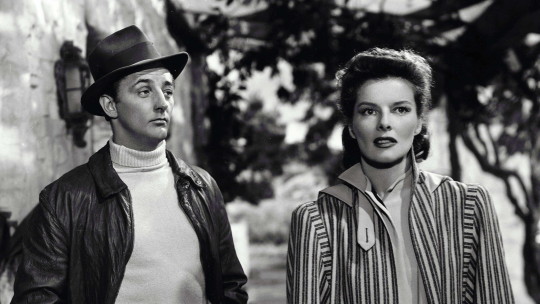
Robert Mitchum and Katharine Hepburn in Undercurrent (Vincente Minnelli, 1946)
Cast: Katharine Hepburn, Robert Taylor, Robert Mitchum, Edmund Gwenn, Marjorie Main, Jayne Meadows, Clinton Sundberg, Dan Tobin, Kathryn Card, Leigh Whipper, Charles Trowbridge, James Westerfield, Billy McClain. Screenplay: Edward Chodorov, based on a story by Thelma Strabel. Cinematography: Karl Freund. Art direction: Randall Duell, Cedric Gibbons. Film editing: Ferris Webster. Music: Herbert Stothart.
5 notes
·
View notes
Text

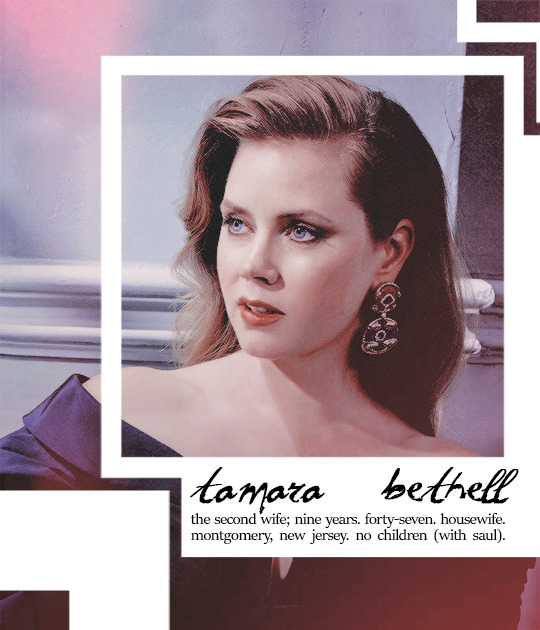

KATHARINE 'KATIE' LOWENSTEIN— His first foray into marriage (1993—1997). They met during their fourth year at Columbia, and by the time graduation came around, they were married. It was a whirlwind romance that had many ups and downs from the start; they loved each other, but Saul was easily distracted by parties and work, while Katie wanted to hurry and grow up already. Their wedding was quick and rushed, eloping one weekend to his and her parents' consternation. (Though they hadn't officially met until college, they both came from prominent Jewish dynasties in New England, so their respective families were already acquainted with each other; it was the only reason that the Weissbergs and the Lowensteins were okay with Saul and Katie's subsequent elopement.) Soon after, Katie was pregnant with their one and only son, Micah. By the time Saul graduated law school and Katie had taken on most of the parenting, their rushed marriage was quickly falling apart. Katie had moved out to Westchester by the time Saul was hired at his first law firm and their divorced was finalized by the time he was hired at his second. After that, Saul dedicated most of his time to work, sacrificing his relationship with his son, which made his co-parenting relationship with Katie incredibly strained due to his constant broken promises to their son. Nearly thirty years since Micah's birth, they're at the point where they can be in the same room for their son's sake, but Katie has no problem making it obvious how much she still resents Saul. Out of all of his wives, he knows he failed Katie—and Micah—the most. After their acrimonious divorce, Katie remained in Westchester where she raised Micah as a single mother.
TAMARA BETHELL— His second marriage and longest by far (2000—2009). Already years into his successful career as a lawyer, Tamara had been a new secretary hired at the firm and Saul took instant notice of the beautiful, redheaded Tamara. Like all of his romantic relationships, it happened pretty instantaneously and they fell deeply in love after just a few months. Like with Katie, he proposed on a whim to Tamara, but this time, they actually planned out their wedding. Her parents weren't thrilled that she was marrying a Jewish man after just a few months of dating, especially since she was 23 to Saul's 28, but the displeasure deepened to abject hatred when they found out Saul had no desire to have more children, much to Tamara's surprise. It was something they should have discussed before getting married, but the topic somehow hadn't come up until after. Tamara was devastated, as she wanted nothing more than a family, but she held out for nine years before she decided she couldn't live without having children. Their relationship was the most consistently pleasant out of his marriages, as Tamara had a habit of putting Saul's feelings over her own and compromising when she didn't want to, but after nine years together, they both came to the conclusion that they weren't meant to be together after all. Their divorce was the smoothest, friendliest break up that Saul had witnessed in over a decade of being a divorce lawyer. Since the divorce, Tamara got remarried and now lives happily with her husband and two children in suburban New Jersey.
THALIA CLARK— His third and most recent marriage (2017—2022). Their meeting was either destined or entirely random, but at the Alfred E. Smith Memorial Foundation Dinner that fateful year, Saul and Thalia were sat the same table. From their name cards on their plates, the two deduced they were both lone Jews at a Catholic charity gala dinner, and from then on, it was like nothing he had felt before. After his second divorce, there was still hope in Saul's heart that he'd find love again; it took him eight years to find his next wife, but the moment he locked eyes with Thalia at that charity dinner, he knew she was the one. From there, the pair were inseparable. As was his pattern, he proposed way too early and their engagement was short. Finally, though, he got a proper Jewish wedding that he missed out on with Katie (they eloped) and Tamara (she was raised Protestant and refused to convert, nor he would've converted to Protestantism for her). The marriage was nearly perfect from the outset, despite how Kathleen, Thalia's sister, disapproved. Thalia was a great date to the various charity galas and holiday parties at the firm, but in her words, she was losing her identity to being Mrs. Saul Weissberg. Then her older sister had moved back to their hometown of Providence Peak, Colorado, which added further strain to their marriage when she desperately wanted to move home to be with her sister. Saul, ever the workaholic, retreated into his job to avoid dealing with their marital problems and Thalia did much of the same, to the point that when they did have a conversation, it was stiff and bordering on a fight. In an effort to save their marriage, Saul relented on moving to Providence Peak in hopes of opening his own firm, ready to branch out after making partner at thirty many moons ago. Unfortunately, the move broke their marriage instead of fixing it, and after just a year of being in Colorado, they were headed towards divorce. In Saul's view, the divorce was amicable because Thalia seemingly didn't want anything to do with him anymore, but recently, Saul has learned their breakup wasn't as mutual as he had thought after a chance encounter at the Spring Extravaganza baseball game. Post-divorce, Thalia has started working as a yoga teacher at the local yoga studio, and Saul has continued his efforts to make his firm successful.
template credit
#inspiration / muse.#inspiration / history.#dynamic / thalia.#dynamic / tamara.#dynamic / katie.#long post cw#i... did this all night instead of the rest of my replies??? sorry y'all#CAN YOU IMAGINE FUMBLING THE BAG THIS HARD. THREE FUCKING TIMES.#saul had the three hottest wives of all time and lost them all :(#also if anyone wants to pick up any of his previous wives hehehe....... lmk. names and fcs can be changed!
4 notes
·
View notes
Text
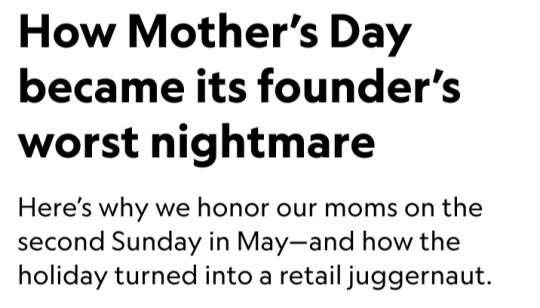

By Brian Handwerk, 11 May 2023
Mother’s Day is one of the year’s biggest greeting card occasions, but it definitely didn’t start out as a Hallmark holiday.
The Mother’s Day we celebrate on the second Sunday in May exists largely due to the incessant efforts — some might say maniacal single-mindedness — of a woman named Anna Jarvis.
But Jarvis wasn’t the first American to promote the idea.
Early attempts to get the holiday going focused on bigger social issues, such as promoting peace and improving schools.
But the version of the day that finally did catch on became its founder’s worst nightmare.
Early Mother’s Day celebrations

Mother’s Day was initially launched by antiwar activists in 1872.
Julia Ward Howe, better remembered for writing "The Battle Hymn of the Republic," advocated a Mothers’ Peace Day on which pacifist women would gather in churches, social halls, and homes to listen to sermons or essays, sing, and pray for peace.
American cities like Boston, New York, Philadelphia, and Chicago held annual Mother’s Day services, centered on pacifism, every June 2 until about 1913.
But these faded away, as did the mothers’ pleas for peace when the world entered World War I.
Another early Mother's Day effort was led by teacher and principal Mary Towles Sasseen, of Henderson, Kentucky.
Her idea, launched in 1887, focused on schools:
Sasseen wrote a guide, Mother’s Day Celebrations, with the hope that school systems around the country would observe Mother’s Day receptions to strengthen ties between students, parents, and teachers.
But by the time she died in 1924, Sasseen’s Mother’s Day never made it far beyond Kentucky.
Who really founded Mother’s Day?
In February 1904, Frank Hering, a University of Notre Dame faculty member, football coach, and national president of the Fraternal Order of Eagles delivered a speech entitled “Our Mothers and Their Importance in Our Lives.”
It was the first public call to set aside a national day to honor mothers.
Although that organization still bills Hering and itself as the “true founders of Mother's Day,” his role in proposing the holiday was soon eclipsed by the tireless efforts of Jarvis to publicize and promote the holiday — and herself as the founder.
Jarvis’s labors, which made Mother’s Day a reality, began with a wish to honor her own mother — who had attended Julia Ward Howe’s gatherings and prayed, quite literally, for such a day to exist.
In 1908, when Jarvis organized the first official Mother’s Day celebrations in Grafton, West Virginia, and Philadelphia, she chose the second Sunday in May because it honored the anniversary of her mother’s death.
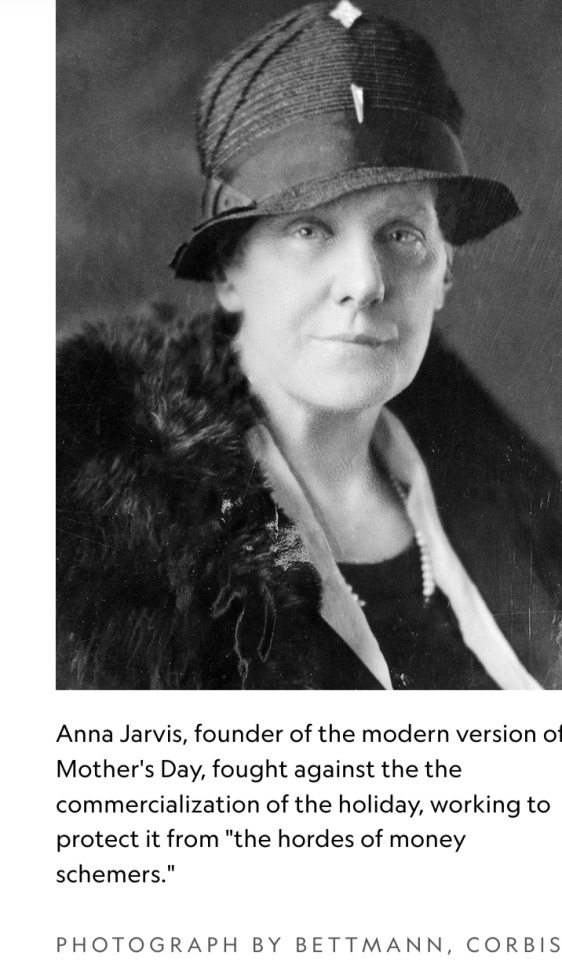
As Jarvis’s campaigning rapidly expanded Mother’s Day observations across the country, she rejected the idea that Hering’s earlier suggestion had anything to do with it.
An undated 1920s statement entitled “Kidnapping Mother’s Day: Will You Be an Accomplice?” explained her attitude towards Hering:
“Do me the justice of refraining from furthering the selfish interests of this claimant, who is making a desperate effort to snatch from me the rightful title of originator and founder of Mother’s Day, established by me after decades of untold labor, time and expense.”
Jarvis, who never had children, acted partly out of ego, says Katharine Antolini, an historian at West Virginia Wesleyan College and author of Memorializing Motherhood: Anna Jarvis and the Struggle for Control of Mother's Day.
“Everything she signed was Anna Jarvis, Founder of Mother's Day. It was who she was."
How Mother’s Day became a national holiday
Jarvis had a point; she’s clearly the primary person responsible for launching the holiday as a national celebration.
Founding Mother’s Day and aggressively protecting her ownership of the holiday became her life’s work.
In her mission to win the holiday national recognition, Jarvis petitioned the press, politicians, churches, organizations, and individuals of influence including, notably, the wealthy Philadelphia department store magnate John Wanamaker.
Wanamaker embraced Jarvis’s idea and promoted a 10 May 1908 gathering at his department store, which Jarvis herself addressed.
The Philadelphia event drew a reported 15,000 people and each one received a free carnation — at least while they lasted. Mother’s Day was off and running.
Under relentless lobbying from Jarvis, state after state began to observe Mother’s Day.
In 1914, President Woodrow Wilson finally signed a bill designating the second Sunday in May as a legal holiday, Mother’s Day.
It was dedicated “to the best mother in the world, your mother.” The idea of honoring mothers was appealing.
General John “Black Jack” Pershing, commander of the American Expeditionary Forces, highlighted the value of the holiday in a general order he issued on 8 May 1918 asking officers and soldiers to write letters home on Mother’s Day.
He wrote: “This is a little thing for each one to do, but these letters will carry back our courage and affection to the patriotic women whose love and prayers inspire us and cheer us on to victory."
In 1934, President Franklin Delano Roosevelt got into the act.
The avid stamp collector sketched a design for a Commemorative Mother’s Day Stamp based on the famous “Whistler’s Mother” portrait.
Unfortunately for FDR, Anna Jarvis didn’t approve.
She found the design ugly and made clear her intention that the words “Mother’s Day” not adorn the stamp — they never did.
Mother’s Day and commercialization
Business owners like John Wanamaker and Philadelphia's florists likely saw Mother’s Day’s commercial potential from that very first Sunday in 1908.
But Jarvis had many strong opinions about how the holiday should and should not be celebrated.
Foremost among them was her hatred of profiteering, even by charitable institutions.
Just a few years after that first Philadelphia Mother’s Day, one story goes, Jarvis ordered a “Mother’s Day Salad” at Wanamaker’s Tea Room — and dumped it on the floor.
Jarvis meant the holiday to be one of quiet reflection and personal relations between mothers and children.
“To have Mother’s Day the burdensome, wasteful, expensive gift day that Christmas and other special days have become is not our pleasure," she wrote in the 1920s.
“If the American people are not willing to protect Mother’s Day from the hordes of money schemers that would overwhelm it with their schemes, then we shall cease having a Mother’s Day—and we know how.”

If Jarvis really did have some plan to stop people from profiting off of Mother’s Day, that plan amounted to exactly nothing.
In 1948, Jarvis died in a Pennsylvania sanitarium, aged 84, penniless after spending her fortune fighting to maintain control over Mother’s Day.
Today, Mother’s Day isn’t just commercialized, it’s a retail juggernaut.
In fact, only Back-to-School and winter holidays inspire Americans to spend more money per person than Mother’s Day, according to the National Retail Federation.
The haul is over 30 billion dollars in all.
Hallmark profits handsomely from that spending; it’s the third biggest card-giving day of the year.
And, to the delight of florists, about three out of four people faithfully send mom flowers.
More than half of all celebrators also plan special outings for their mothers, gifting tickets to concerts and sporting events—or a day at the spa.
And Mother’s Day is also the busiest day of the year for restaurants, according to annual research surveys from the National Restaurant Association.
More than one in four people go out for a meal with mom each year, and many more at least order takeout so that no one has to spend the special day in the kitchen.
If the holiday has become a runaway moneymaker, Jarvis would have loathed, at least gathering around a table for those Mother’s Day meals offers children a chance to personally honor their moms in the way she always intended.
#Mother's Day#Anna Jarvis#Julia Ward Howe#Mary Towles Sasseen#Frank Hering#President Woodrow Wilson#President Franklin Delano Roosevelt#Hallmark
17 notes
·
View notes
Photo
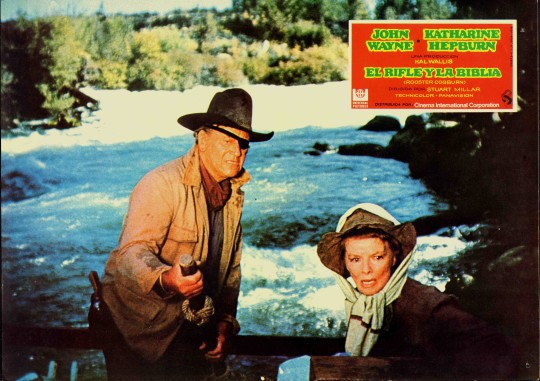
Rooster Cogburn, Spanish lobby card. 1975
3 notes
·
View notes
Text
@katharined , katharine's receiving room , hampton court
Given all that had occurred of late, John was nothing short of reticent to spend more time than necessary near the Greys. The rumours of his cousin's re-emergence, it was said, had proved false, and yet he still remained vigilant of the scrutiny he would face. Nonetheless, when Katharine Brandon asked him to speak to her, he knew well that he must obey. Since he had married Amelia, she had become part of the closest thing he had to family, and he believed firmly, now more than ever, in trying to maintain good relations with the family.

"There is a matter on which I would like your advice," he told her, glancing up from their card game and pausing a moment. "I have received a letter from abroad. And I hoped you might know the course of action I must take with it. Tempted though I am to burn it, I would value your thoughts before doing so."
5 notes
·
View notes
Text
Bringing Up Baby (1938, Howard Hawks)
I watched Bringing Up Baby earlier this summer in a packed theatre, following an introduction by Kevin McDonald. I wrote this afterwards, but, for whatever reason, I never got around to posting it.
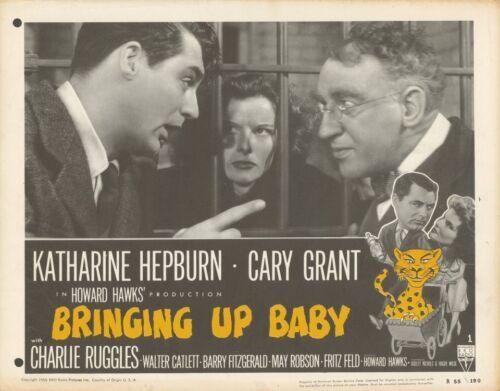
Bringing Up Baby is a first-rate Walter Catlett vehicle. The actor tops such luminaries as Charles Ruggles, Barry Fitzgerald, May Robson, and Fritz Field. Of Course, the picture belongs to Nissa, a leopard who plays the titular Baby. She's an even bigger scene stealer than Skippy, the dog from The Thin Man series, who also appears in this movie. Seeing this as part of a crowd opened my eyes to Nissa’s star power. The collective tension in the theatre when she enters the picture, first interacts with a human, and when she's found wrestling with Skippy is immediate, and, each time, that tension is instantly melted away whenever she's revealed to be just a big affectionate kitty. She has the audience in the pad of her paw whenever she's on screen.
Nissa gets the titular role, but it's Katharine Hepburn and Cary Grant whose names are above the title. Hepburn enters the picture in full force, never lets up, and still manages to ratch her performance up a notch for the climax. Grant is largely used as set dressing for Hepburn et al., gracefully misdirecting characters and dialog, as well as getting in a few choice outbursts of his own. For all of the chemistry the two leads share, their romance is never developed, and is rather limp on the side of Grant. The film is only interested in the flimsy romance only as a vehicle for the couple’s entanglements, an outburst of dalliances, with their barely repressed desire spilling out across the countryside in the form of slapstick routines.
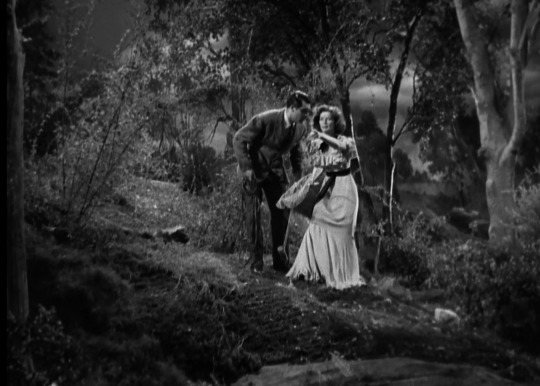
The hit/miss ratio of the picture's gags rests squarely below the picture’s reputation. Grant, tasked mostly with reacting to the other players, suffers the most. With so many characters playing so much dialog and business up to the rafters at all times, he is often left holding a reaction for an extra beat or two, and his bits begin to sag before they even get their turn to play out. Other times, he has to repeat a gesture multiple times in quick succession, unable to build on his gag, so as not to take away from the reams of dialog being read by Hepburn, which diminishes his returns. However, Hawk’s breakneck pacing, and tendency for overlapping dialog and bits of business seems to have this failing in mind. When a joke fails to land, it's either covered up, or hurried by so quickly that the picture barrels forward without ever losing its momentum.
The picture is held up at all times by some of the premier screen talents of its day, and it doesn't begin to sag until its coda. The picture finally slows down following its climax, after which the cast is emptied,save for Hepburn and Grant. We are left in the room where we first began, only now the romance becomes the focus, turning away from the couple’s chemistry. This shift in focus is unprepared to carry its own weight, let alone carry out the picture through to its end. This, coupled with the fact that the main gag here runs on the fumes of the previous act - a back and forth lacking tension, which should have been brightened with grace and playfulness - prevents the ending from satisfying. That is, if you can consider a successful reunion between two such dizzyingly beautiful people to be inadequate. It's the rare moment where the picture leaves its blemishes uncovered, before cutting to the jaunty theme and end cards.
Bringing Up Baby is not a graceful movie, but a rough and tumble affair that’s only playful if you follow Hepburn’s lead. Otherwise, it’s an all-out relentless assault. All that aside, this was never less than a crowd pleaser, and I cannot recall the last time I was in a theatre filled with so much laughter. Granted, this was a curated audience, and, with my choice of pictures and playtimes, I'm seldom in a theatre with more than a dozen or two other people at any given showing.

#Bringing Up Baby#Howard Hawks#Cary Grant#Katharine Hepburn#Walter Catlett#classic hollywood#old hollywood
3 notes
·
View notes
Text
Confectionary prompts!
🍰 having a cake for a special occasion, and living off it for the next few days — Jo & Kay.
Requested by: @tortoisesshells.
Jo smells it before anything, the unmistakable scent of butter and oven heat. There's cherry juice stains on a wooden cutting board on the table, and Kay looks more than a little proud of herself, standing in the tiny kitchen of their billet with a worn apron tied around her waist.
"You weren't supposed to see this," she says, but she's smiling, makes no move to hide anything. There's a touch of powdered sugar or flour on the tip of her nose.
Jo feigns ignorance. "See what?"
"Precisely."
She's never spent much time in here, the kitchen, and neither has Kay. The counters have been mostly for putting together plates of cold food at off times, and making coffee. The table for sitting. It's different to see mixing bowls in the sink, a bowl with the few misshapen cherries Kay had left out. Faint swipes of dried batter on the dark wooden cabinets.
She can't leave the whole mess to her friend, though. They scrub dishes alongside each other, like mess kits in Normandy, like Holland. It's nice to have a sink, and water, even if it barely runs hot.
"It's not very nice of me to make you wash dishes on your birthday," says Kay.
Jo pretends again. "Who said it was my birthday?"
"A little birdie." Chuck, probably, she guesses. Or Pat.
By the time the cake cools, they're starving for it. It's a little lopsided, and some of the frosting is melting between the layers. Jo can only imagine the time it took for her to beg borrow and steal — the flour, the sugar, the butter, the cherries and the kirsch — much less to make. They haven't had this much sweetness in what — years? Jo almost cries that Kay had put in the effort. Kay almost cries with laughter when Toni insists on taking pictures of it. The best she'd found in the kitchen was a square pan, so she'd cut it, and it looks a little like a building half on its way to collapse. They dig in with abandon, and coffees unsweetened, and it's almost too much.
"Now, Katharine," Toni starts, and Kay gives her a look at Toni's trademark exaggeration. Her fork clinks against the china plates they'd found in a back cabinet, the ones with impossibly heavy gold-toned designs and a layer of dust. "Just where does a socialite learn to make a Black Forest gateau?"
Kay takes a sip of her coffee. "Where a socialite always learns, dearest Antonia. Her governess." Now it's Jo's turn for a furrowed brow, and Kay clarifies. "She was dismissed just before I was born, actually. You know. We had a Scottish one after that. But she left her recipe cards."
"It's delicious," Toni says, and means it. Jo thinks of her mother, and the year she'd had the most commissions yet for several wealthy families — debutante gowns, vacation wardrobes, wedding parties and trousseaus. Jo had celebrated her fourteenth birthday with a sour cherry cake, with lemon zest and powdered sugar.
This one, it's chocolate, and heavily so, but it's so filled with effort and with the fresh fruit that Jo feels like maybe she's somewhere other than here. Later, or tonight — maybe that's when she'll get the wrong idea, when she'll feel too lonely and too sad and come down and finish off the bottle of kirsch and regret everything in the morning. But now, now is okay. Now is staving off the memories, and friends around the table, and sweetness sticking between their teeth.
#kay's tag#jo's tag#toni's tag#shoshi writes#thank you friend <333#no rereading we die like men#she says before she finds seventeen typos probably#shoshi's prompt tag#wip: when the war came
6 notes
·
View notes
Note
I loved your take of the post-B&C but I want to point out that in the show Aemond can't be older than 16 (there's first a 10 year time skip and he hadn't been born before that and then there's a 6 year time skip post Driftmark)
Thank you, I'm glad you liked my rambling!
I also used to think this, but it always annoyed me that there were just some things that don't quite add up about that 10 year time skip.
If Aemond was actually 10 years old in the Driftmark episode, we should have seen his birth before the time skip or at least have Alicent already very pregnant during Rhaenyra's wedding.
There's also Rhaenyra's claim that she and Laenor tried to conceive before she turned to Harwin. We know that Luke is 14 years old after the second time skip, which would make him 8 at Driftmark. Jace has to be about at least a year older than him, putting his conception as 10 years ago, in other words, before the timeskip or right after Rhaenyra's wedding, which just doesn't add up with the other information we get.
Personally I always assumed the so called 10 year time skip was probably closer to being between 12-13 years. All the dates and kids' ages work much better if you make that assumption.
And as far as I am concerned, my theory was confirmed when one of the casting assistants for HOTD, Katharine Edmonds posted this cue card on her Instagram.
link

Aemond is 12 before the final time skip and 18 after. One of the other things you'll notice is that Baela and Rhaena are not twins on the show.
I'm not quite sure why there are two different ages for Aegon (there also are for a couple of other characters, but those can be explained as approximate ages), but the rest of the information adds up, so these are the ages I consider as show canon.
5 notes
·
View notes
Note
4, 8 and 15 for the identity ask thingy
Thank you SO much for this ask @bakashisensei I'm super bored today ;asldkgjk
4. do you like your name? is there another name you think would fit you better?
I'm so sorry for the wall of text ahead, but I actually need to rant about this lmao
I have a love-hate relationship with my name. I think it's pretty and that it suits me, plus I get compliments on it all the time, but dear god is it a headache.
First of all, my full name is LONG. Which makes filling out paperwork with small boxes annoying.
Second, it's inconsistent on my most important documents because it includes a hyphen, which is allowed on birth certificates but not social security cards.
Third, I grew up thinking the hyphen was between my middle names, but it's actually between my first name and my first middle name. I didn't discover this until I went to college and had a reason to look at my birth certificate.
Fourth (and worst), there's also an apostrophe in my name, which gives panic attacks to computers on a regular basis. Pharmacies, hospitals, voting registration, websites, etc. I never know if it's going to take the apostrophe or not and it's enormously irritating.
Fifth, because I go by one of my middle names, I'm constantly called the wrong name. Teachers, doctors, therapists, physical therapists, etc. They call me by my first name, and even if I correct them repeatedly, they often never stop calling me by the wrong name.
Sixth, I'm named after the heroine of Gone with the Wind. Which. Well. When your namesake is the protagonist of (arguably) the most influential racist novel in the English language? I think the problem there speaks for itself.
The lesson you should take from this: think of the challenges that might come with the name you give your child!!
8. what musical artists have you most felt connected to over your lifetime?
I'm not really A Music Person, and there aren't any particular artists that I feel connected to, but there are a few songs that will make me instantly cry because of how much I feel when I hear them:
"Praying" by Kesha
"She Used to Be Mine" from "Waitress", particularly Katharine McPhee's version
"Sober" by Demi Lovato
"Sorry" by Halsey
15. five most influential books over your lifetime.
Beloved by Toni Morrison
The God of Small Things by Arundhati Roy
Harry Potter Series (god I hate that JKR made this painful to list, but I can't leave it out if I'm honest)
A Song of Ice and Fire Series
Rosemary for Remembrance by @sintari isn't a novel, but it's better than most actual published works so fuck the rules. This fic influenced my writing style more than any book I've ever read. It's brilliant and I'll never stop recommending it.
If anybody else wants to send me an ask for the identity game, feel free. I'll try not to be so wordy next time lol
8 notes
·
View notes